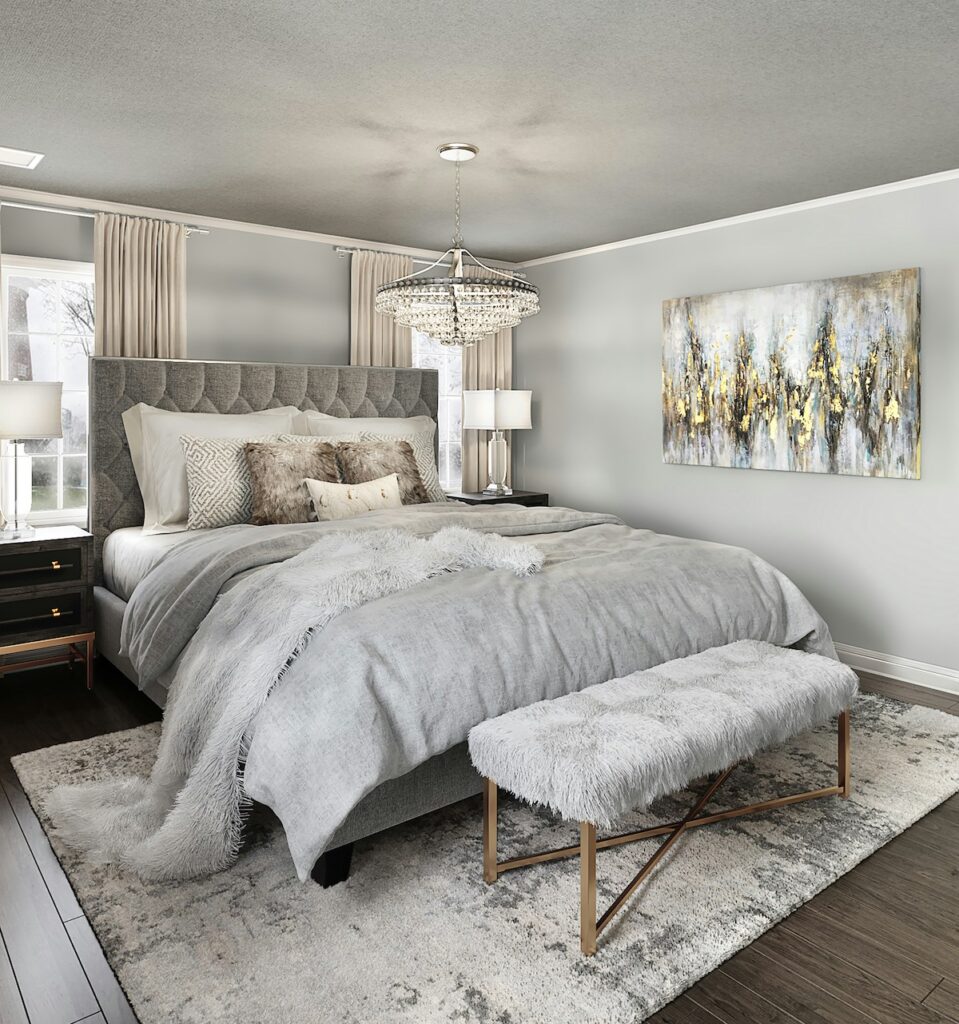Decorating your walls with art can transform your living space, adding personality and style. However, to achieve a harmonious and aesthetically pleasing display, it’s essential to follow some key wall art rules.
Whether you’re a seasoned art collector or just starting out, these guidelines will help you make the most of your wall art. From selecting the right sizes to mastering the art of hanging, here are the wall art guidelines you need to know.
Why Is It Important To Follow These Wall Art Rules?
Following wall art rules ensures that your display is aesthetically pleasing and well-balanced, enhancing the overall ambiance of your space. These guidelines help you avoid common pitfalls, such as hanging artwork too high or selecting pieces that are disproportionately sized for your wall. By adhering to these rules, you create a harmonious environment where your art can truly shine, reflecting your personal style while maintaining visual coherence.
Not only that, but understanding how to hang wall art properly protects your pieces from damage. It will make sure that they remain secure and well-presented. Whether you’re an art novice or a seasoned decorator, these rules provide a solid foundation for creating beautiful and impactful art displays in your home.
The Wall Art Rules You Need To Know
Rule #1: Choose The Right Size
You might be wondering how large your artwork should be. The general rule is that your artwork should take up 60-75% of the available wall space. For example, if you have a large empty wall, consider a big statement piece or a series of smaller pieces arranged in a gallery style. The typical wall art sizes can vary, but balance is key. Too small, and your print might look lost; too large, and it can overwhelm the room.
Rule #2: Consider The Height
Want to know how to hang wall art? Keep in mind that the height is crucial. The center of your artwork should be at eye level, which is typically around 57-60 inches from the floor. This rule ensures that the art is viewed comfortably whether you’re sitting or standing. In rooms where people spend a lot of time sitting, like the dining room or living room, consider hanging your art slightly lower.
Rule #3: Balance Your Wall Art With Furniture
Your wall art should always complement your furniture. A common wall art guideline is to make sure that the width of the artwork or grouping of artworks should be about two-thirds the width of the furniture below it. For instance, above a sofa or a bed, the artwork should be centered and span most of the width of the furniture to create a balanced look.

Rule #4: Try Creating A Gallery Wall
A gallery wall is a fantastic way to display multiple pieces of wall art. Start by laying out your arrangement on the floor before hanging to ensure a well-balanced composition. Mix different sizes and shapes, but keep a consistent spacing of 2-3 inches between each piece. This technique works well for how to hang canvas wall art and framed pictures together in a cohesive display.
Rule #5: Watch Your Spacing
Proper spacing is crucial when hanging multiple pieces of art. As a general rule, you should aim for 2-6 inches of space between frames. This ensures that each piece to stands out on its own. But at the same time, it means that your arrangement still looks cohesive. Larger spaces work well for more showstopping displays, while closer spacing creates a more intimate feel.
Rule #6: Choose Your Designs Carefully
The function of the room should influence your wall art choices. For example, serene landscapes or abstract art with calming colors are ideal for bedrooms or bathrooms.
On the other hand, bold, eye-catching, and vibrant pieces can energize living rooms or kitchens. More personal prints such as couples’ photos or family photos can hang in the bedroom or living areas. Tailoring your artwork for the room’s purpose is a key wall art rule for creating a harmonious environment.

Rule #7: Use Templates For Precision
If you’re hanging one artwork, your job should be fairly easy. But hanging multiple artworks can be tricky. To ensure precise placement, cut out paper templates of your artwork and stick them on the wall before you start hammering nails.
This method is especially useful for gallery walls or when hanging multiple pieces. Templates allow you to experiment with different arrangements without committing to holes in the wall. Or, to make things easy for yourself, simply try one of our Wall Displays. These are pre-designed displays featuring prints in set sizes. You’ll be able to arrange your images during the order phase, allowing you to see what the overall display will look like before you finalize your order.
Rule #8: Mix & Match Styles
Don’t be afraid to mix and match different styles of wall art. Combining traditional paintings with modern prints or photographs can create a dynamic and diverse display. The key is to maintain a common theme or color palette that ties the pieces together, ensuring a cohesive look.
For example, you could mix:
- Floating Frame Prints with frameless Canvas Prints
- Vintage prints with modern art
- Landscapes with retro prints
- Family photos with landscapes
Rule #9: Stick To Your Personal Style
While there are many wall art guidelines, ultimately, your personal taste should guide your decisions. Trust your instincts and choose pieces that resonate with you. After all, your home should reflect your unique personality and style.
By following these wall art rules, you can create beautiful, balanced, and personalized displays that enhance your living space. Whether you’re learning how to hang canvas wall art or exploring how to hang pictures from a picture rail, these tips will help you achieve a professional and stylish look. Enjoy the process of selecting and displaying your art, and let your creativity shine through!

FAQs
How do I choose the right frame for my art?
It’s easy; choose frames that complement your decor and the artwork itself. For a classic look, match frames to your furniture or trim. For a modern feel, opt for sleek, minimalistic frames. Consistent frame styles create a cohesive look, while varied frames add an eclectic touch. Of course, you can’t really go wrong with classic black or white.
How do I create a gallery wall?
To create a gallery wall, start by laying out your arrangement on the floor to ensure a balanced composition. Mix different sizes and shapes, keeping a consistent spacing of 2-3 inches between each piece. Use paper templates on the wall to plan your layout before hanging.
How big should my artworks be?
Artwork should generally take up 60-75% of the available wall space. This will ensure that the piece is proportionate to the wall and the room. It will help you to create a balanced and cohesive look.





